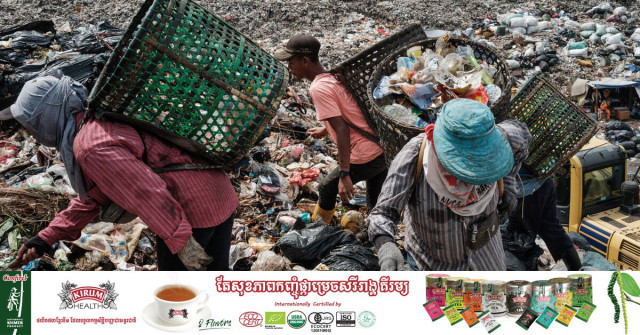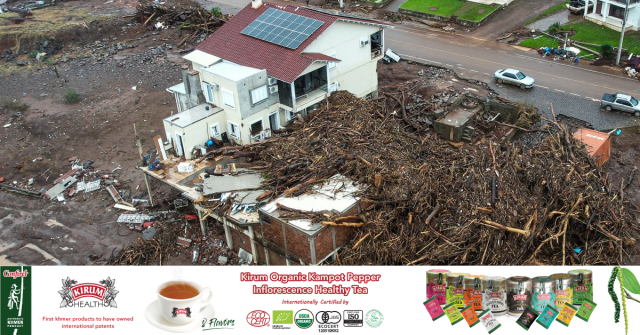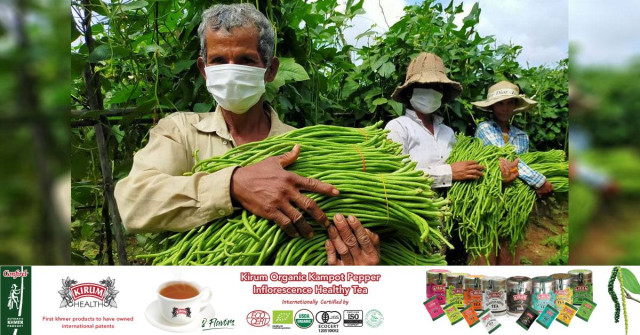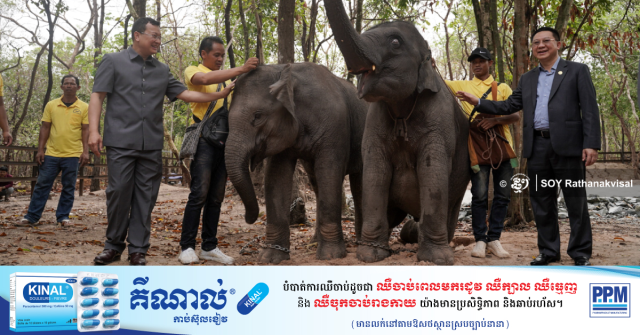Stung Treng’s Fishing Heritage Under Threat
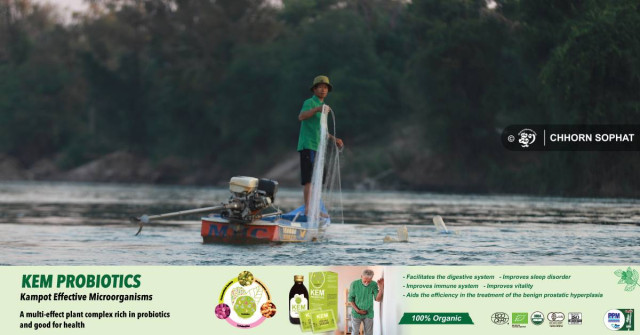
STUNG TRENG - Phay Houk, 66, has been fishing for a living in Koh Sneng village of Stung Streng province for more than 40 years but now the catch is barely enough for his family to live on.
Over the past few years, he has seen hotter dry seasons, inconsistent rain and a declining catch. Despite following his ancestors’ footsteps, he no longer wants his children to inherit his legacy.
“Before, I could earn 30,000-50,000 riels ($US7.50-12.50) daily from fishing. Now, I return home empty-handed some days,” he said, recalling the abundance of fish in the 2000s.
As the future of fishing turns bleak, Houk has encouraged his three sons to pursue higher education. One of them is now a high school teacher, one a farmer and the other is a cashew nut worker.
 Phay Houk, 66, has been fishing for a living in Koh Sneng village of Stung Streng province for more than 40 years but now the catch is barely enough for his family to live on. Photo: Chhorn Sophat
Phay Houk, 66, has been fishing for a living in Koh Sneng village of Stung Streng province for more than 40 years but now the catch is barely enough for his family to live on. Photo: Chhorn Sophat
Houk is not the only one to give up fishing in Stung Treng, a Ramsar site and crucial habitat for fish species. IUCN research in 2023 confirmed the fish catch decline and the switch of many fishermen in the region to farming rice, oranges and other crops.
Srey Sam Vicheth, the director of the Stung Treng Provincial Fisheries Administration said the drop in the number of fishermen started about four or five years ago.
“In 2017 or 2018 there was still an abundance of fish and farmers switched from farming to fishing, while fishermen from other provinces migrated to Stung Treng province to fish,” he said.
A multi-faceted problem
Located inside the Stung Treng Ramsar site, Koh Sneng village is only accessible by boat.
Sap Udom, 39, head of Koh Sneng Fishery Community, said it was created in 2002, including 1,139 people of 270 families, around 70 per cent of whom were fishers.
Villagers and local authorities attribute changes in fish catch and fisher population in the past few years to several factors, such as climate change, infrastructure development and illegal fishing.
 Climate Change is believed to cause decline in fish harvest. Photo: Chhorn Sophat
Climate Change is believed to cause decline in fish harvest. Photo: Chhorn Sophat
“In the last four or five years, the weather has been hotter, the flow of the Mekong River has changed due to the development of dams along the river, and landslides and deforestation, which are contributing to the effect on the fisheries sector,” Vicheth said.
Sap Udom agreed the weather had changed dramatically. He noticed rain had been less regular.
“In addition to climate change, the increase in the population in the fishery community also affects fish yield. Illegal fishing remains a major challenge leading to fish scarcity and extinction,” Udom said.
He said the turbulent flow of the Mekong River may also disrupt fish spawning and migration.
 Sap Udom is head of Koh Sneng Fishery Community which was created in 2002, including 1,139 people of 270 families, around 70 per cent of whom were fishers. Photo: Chhorn Sophat
Sap Udom is head of Koh Sneng Fishery Community which was created in 2002, including 1,139 people of 270 families, around 70 per cent of whom were fishers. Photo: Chhorn Sophat
Sorn Pang, a 46-year-old widow and fisher, has noticed a gradual decline in her catch in the last four to five years and disappearance of natural fish feed such as the willow-leaved water croton.
“Every prahok fishing season, I could harvest 100-200 kilograms of fish. I could make a living and particularly save up for house construction,” she said.
“Now, I hardly make a living. The harvested prahok is sufficient for personal use in the family with a little left for sale.”
Doeung Seiha, 34, a teacher at Koh Kei Primary School in Koh Sneng commune, said, “Freshwater swamp forest or flooded forest also perished. Additionally, there are still illegal fishing crimes in the community.”
The construction of hydropower dams in the Mekong River Basin has generated controversy. According to the IUCN report, many upstream hydropower dams in China and Laos, which release water throughout the dry season, are destroying mangroves and altering fish migration patterns, especially of critically endangered species such as Pangasianodon gigas, also known as the Mekong giant catfish.
 Sorn Pang, a 46-year-old widow and fisher, has noticed a gradual decline in her catch in the last four to five years and disappearance of natural fish feed such as the willow-leaved water croton. Photo: Chhorn Sophat
Sorn Pang, a 46-year-old widow and fisher, has noticed a gradual decline in her catch in the last four to five years and disappearance of natural fish feed such as the willow-leaved water croton. Photo: Chhorn Sophat
The future of fishing
Sap Udom said most of the fishers now in Koh Sneng village are the older generation, who have been fishing since they were young.
As fish catches decline, Udom has also encouraged people to farm fish, work in plantations and grow crops, instead of relying on fishing alone. However, such livelihoods also come with challenges as irregular rain and drought reduce crop yields.
As Koh Sneng receives tourists for sightseeing in the Ramsar site mainly during the dry season, Udom also intends to see more tourists visiting the community as it could provide additional income to villagers.
As for fishing crimes, Vicheth said the Provincial Fisheries Administration has tightened the implementation of fishing laws to crack down.
 Udom intends to see more tourists visiting the community as it could provide additional income to villagers. Photo: Chhorn Sophat
Udom intends to see more tourists visiting the community as it could provide additional income to villagers. Photo: Chhorn Sophat
He said they have also worked with stakeholders to set up patrols to raise fishers’ awareness by showing the impact of illegal fishing, strengthening law enforcement, and organizing natural fish stocks by releasing main fish species back to the river.
“The Provincial Fisheries Administration has cooperated with stakeholders to prevent problems caused by climate change by protecting forests in protected areas, protecting flooded forests from deforestation, and restricting forest laws,” he added.
However, planting mangroves forests which could serve as fish habitats is not taking place. Vicheth said the water here flows quickly, unlike Tonle Sap Lake, which causes difficulties in planting.
 Srey Sam Vicheth, the director of the Stung Treng Provincial Fisheries Administration said the drop in the number of fishermen started about four or five years ago. Photo: Chhorn Sophat
Srey Sam Vicheth, the director of the Stung Treng Provincial Fisheries Administration said the drop in the number of fishermen started about four or five years ago. Photo: Chhorn Sophat
Kaing Khim, Deputy Director-General of Fisheries Administration of the Ministry of Agriculture, Forestry and Fisheries, said women play crucial roles in the fisheries sector now as they are capable of processing fish into other food products and run businesses for a living.
“Most notably, women are also involved in the processing of traditional fishing gear that do not affect aquatic resources,” Khim said.
“Women are also now involved in fish crime crackdowns by raising awareness to the public not to use illegal fishing gear.”
They educate their husbands and children not to commit fishing crimes,” she said.
Yet Vicheth said the decline of young fishers could lead to a problem in the future as local people in Stung Treng province mainly buy fish for their daily consumption.
“Stung Treng province is considered the vital habitat for a variety of fish species, especially for rare fish species. In addition to being a habitat for production of fish, the region plays as the biggest fish supplier for the local people,” Vicheth said.
Doeung Seiha wondered what would happen if the village kept losing fish yields.
“Although I am a teacher at primary school, I still spare some time to attend to fish biodiversity protection with the community,” he said. “I intend to see more villagers in the community understanding about fishing crimes and stop those illegal fishing activities.
“I do not look down on my fishing career but I think I will see more young people prioritize education over fishing.”
 Doeung Seiha, 34, a teacher at Koh Kei Primary School in Koh Sneng commune, said, “Freshwater swamp forest or flooded forest also perished. Additionally, there are still illegal fishing crimes in the community.” Photo: Chhorn Sophat
Doeung Seiha, 34, a teacher at Koh Kei Primary School in Koh Sneng commune, said, “Freshwater swamp forest or flooded forest also perished. Additionally, there are still illegal fishing crimes in the community.” Photo: Chhorn Sophat
 Koh Sneng village is only accessible by boat. Photo: Chhorn Sophat
Koh Sneng village is only accessible by boat. Photo: Chhorn Sophat
This story is produced with support from Internews’ Earth Journalism Network through Mekong Eye.









